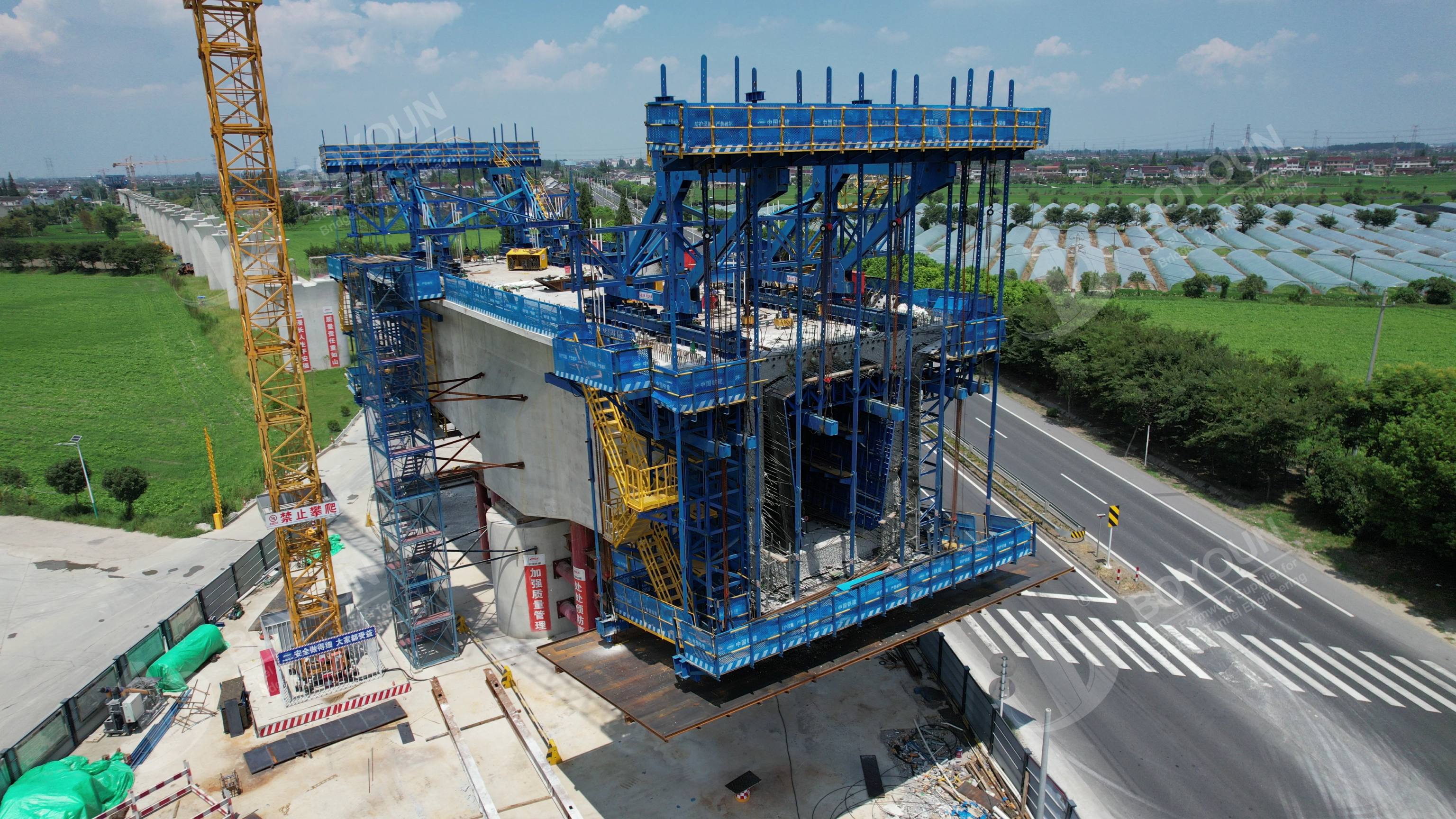In bridge engineering construction, precast beams and cast-in-place beams are two commonly used beam construction methods, which have significant differences in construction technology, quality control, cost, and construction period. Reasonable selection of construction methods is of great significance to ensure the safety, economy, and applicability of bridge projects.

In terms of construction technology, precast beams are prefabricated in factories or prefabrication sites at the construction site according to design requirements and then transported to the site for installation. This method can achieve standardized and industrialized production, and is not overly affected by on-site weather and the environment, resulting in higher construction efficiency. For example, on the precast beam production line, advanced mechanical equipment can be used for steel bar processing, formwork installation, and concrete pouring to ensure the accuracy and consistency of component dimensions. Cast-in-place beams, on the other hand, involve setting up supports or formwork directly at the bridge construction site for concrete pouring. This construction method is highly flexible and can be adjusted according to actual on-site conditions, especially suitable for bridge construction in complex terrains or with irregular structures. However, cast-in-place beam construction is greatly affected by external environmental factors. Weather conditions such as rainfall and low temperatures may lead to construction interruptions or affect the quality of concrete.
Regarding quality control, precast beams are produced in a factory environment, enabling strict control of raw material quality and production processes, reducing interference from human factors. During the production process, precise control can be exerted over steel bar binding, concrete mix ratios, and curing conditions, effectively ensuring the strength and durability of the beams. Meanwhile, precast beams can undergo comprehensive quality inspections before leaving the factory, and unqualified products can be reworked in a timely manner. In contrast, quality control of cast-in-place beams is more challenging. The on-site construction environment is complex, and problems such as inadequate vibration and cracking are prone to occur during concrete pouring. Additionally, post-construction detection and repair are difficult. Moreover, the curing conditions for cast-in-place beams are hard to control as stably as those for precast beams, affecting the quality of the beams to some extent.
Cost and construction period are also important considerations in the comparison. Precast beams require significant upfront investment in prefabrication site construction, mold procurement, and transportation equipment, resulting in high initial costs. However, due to their high production efficiency and mass production capabilities, the unit cost decreases as the project volume increases. Additionally, the quick installation of precast beams can effectively shorten the construction period, reducing management costs and equipment rental fees during construction. Cast-in-place beams, on the other hand, do not require large-scale investment in prefabrication equipment, resulting in lower initial costs. Nevertheless, their on-site construction processes are complex, requiring a large amount of labor, and the construction period is longer, which may lead to increased labor costs and equipment rental fees. At the same time, downtime losses due to adverse weather conditions during cast-in-place beam construction will further increase project costs.
In actual projects, the choice between precast beams and cast-in-place beams requires comprehensive consideration of multiple factors. Precast beams are more advantageous for bridge projects with high standardization, large project volumes, and tight schedules. Cast-in-place beams are more suitable for bridges with complex terrains, special structural forms, or smaller project volumes. For example, in the construction of urban viaducts, due to the long alignment and uniform structural forms, the use of precast beams can enable rapid construction and reduce the impact on urban traffic. In mountainous bridge construction, when encountering complex terrains and irregular bridge structures, cast-in-place beams can better adapt to on-site conditions.
In conclusion, both precast beams and cast-in-place beams have their own advantages and disadvantages. In bridge engineering, a comprehensive comparison should be made based on specific project requirements, engineering conditions, and economic indicators to select the most suitable construction method, ensuring the smooth construction and long-term safe use of bridge projects.

International Department: Room 2507-2508, Tower C of Wanda Plaza, Tongzhou District, Beijing 101118, China.
+86-13021287080
info@boyoun.cn